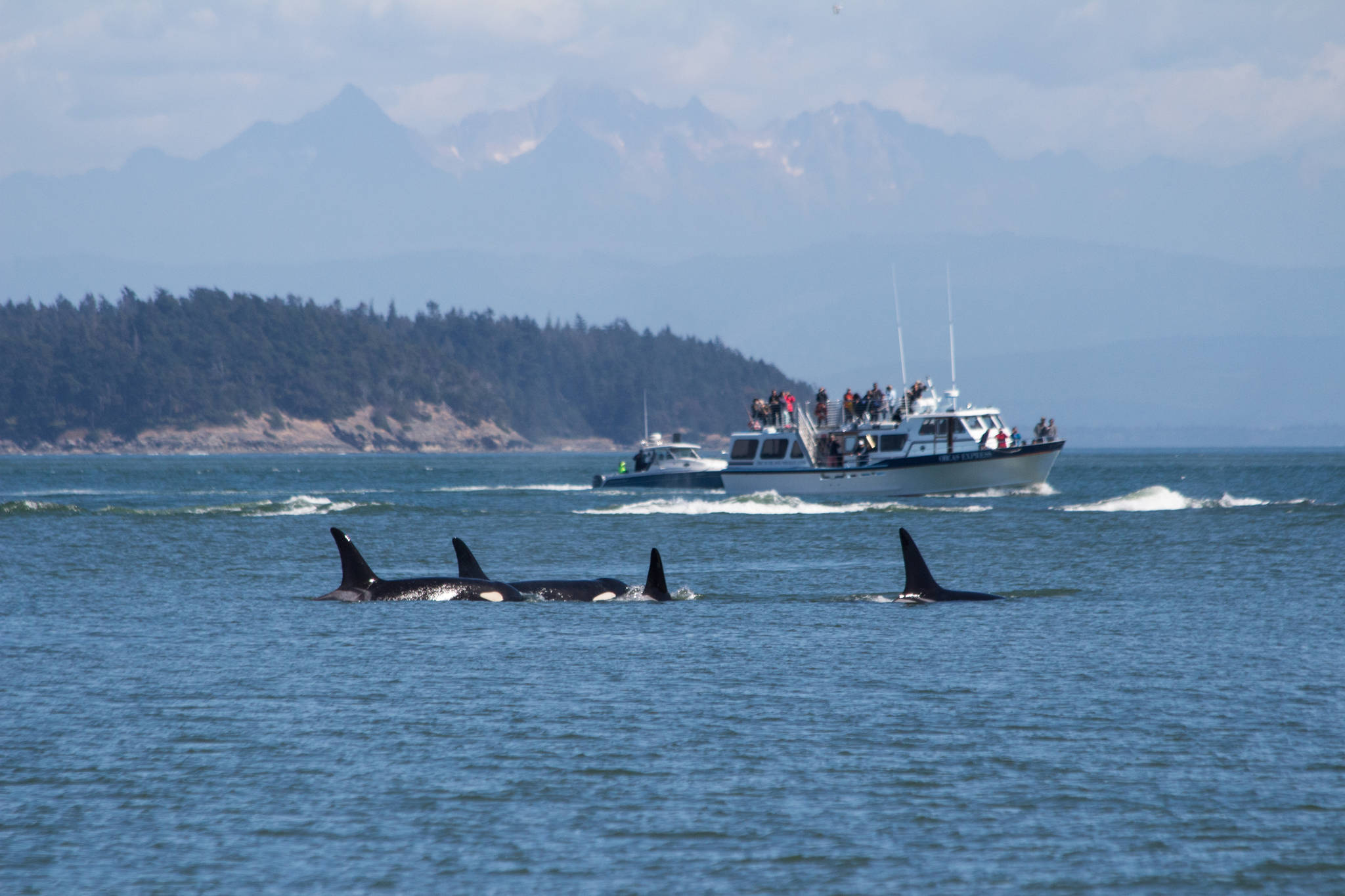Four regional whale watching companies are suing an orca conservationist group and the county over a proposed ballot measure.
Southern Resident Protection, a Lopez orca advocacy group organized by Sorrel North, caught the attention of the companies by proposing an initiative in San Juan County wherein the viewing distance for the Southern residents would be extended from 300 yards, as established by the Legislature this year, to 650 yards.
“The San Juan County Orca Protection Initiative will amend the San Juan County Watercraft Regulations, increasing distance requirements between all Vessels — including non-motorized — and Southern Resident Killer Whales (SRKW) to 650 yards in San Juan County waters,” a press release from Southern Resident Protection said. “Increasing distance regulations to 650 yards will allow the starving whales greater access to salmon in their core feeding habitat in San Juan County waters while other, longer-term solutions (such as breaching dams) are being pursued.”
Island Adventures, Inc.; Pacific Cruises Northwest; Inc.; Puget Sound Express, Inc.; and San Juan Safaris, LLC, filed a complaint against North, Southern Resident Protection, San Juan County and F. Milene Henley in the Skagit County Superior Court. The complaint states that Southern Resident Protection is not a registered political committee and that Henley is only included in a professional capacity, not personal.
The lawsuit claims that the initiative is not legal and therefore it should not be on the ballot this fall. According to attorney Seth Woolson of Chmelik Sitkin & Davis, who is representing the quartet, the county cannot impose laws that usurp those of the federal and state governments. Federal law requires boaters to keep a buffer of 200 yards between their vessels and Southern resident orcas. Senate Bill 5577 expanded that distance to 300 yards and added a caveat that a vessel cannot be positioned within 400 yards ahead of the path or behind of a Southern resident orca
The bill originally included a 650-yard distance for whale watching vessels. This restriction would have remained in effect until Jan. 1, 2023. However, the added distance for whale watchers was removed before the bill continued forward. The bill sponsors said they removed the moratorium after hearing public testimony, specifically from commercial whale watchers that felt it was essentially a de facto ban on whale watching.
“There’s a lot of bad things that would happen,” San Juan Safari owner Brian Goodremont told the Journal.
Goodremont said the whale watching boats do a lot in terms of orca conservation. He said that the companies provide 95 percent of the scientific data for orca, they alert tankers of the killer whales’ presence and set an example for and monitor recreational boaters.
The lawsuit claims that the initiative, named in the documents as 2019-9, is not pursuable as it would infringe on federal and state guidelines. For the initiative to appear on the ballot, Southern Resident Protection would need to gather 1,635 signatures — 15 percent of the county’s votes cast in the last gubernatorial election.
“We believe San Juan County can adopt more protective rules as long as they don’t conflict with federal and state laws. If we were attempting to reduce distance regulations, that would directly conflict with state law,” North said. “However, there are no state or federal laws that require our county to allow boats to come close to the Southern resident orca. We are including the state’s 300 yard approach limit and extending it to 650 yards. Our initiative mirrors the state regulations in nearly all other ways.
Unsure of just how many signatures the initiative has gathered thus far, North said the group has received nothing but support from the local community.
According to San Juan County, the electorate of the islands adopted the charter form of government which allows registered voters in the county the power to propose initiatives.
“An initiative is a proposal put forth by the citizenry for specific legislation to be added to existing law,” the county’s initiatives and Referenda Handbook said. “It is called an initiative because it allows the electorate to initiate legislation. An initiative proposal may be adopted by the county council or submitted to the people for a vote.”
Orcas were listed as an endangered species in Washington state in 2004, and nationally in 2005. The population of Southern resident killer whales has declined from 98 in 1995 to 74 in 2018 — the lowest it has been in 30 years. A calf born over the winter brought the number of orcas back up to 75.
Legislature’s initial bill requiring a 650-yard distance for whale watching boats originated from the Southern Resident Killer Whale Task Force recommendations. Gov. Jay Inslee signed Executive Order 18-02 on March 14, which designated state agencies to take immediate action to benefit orcas and asked the task force to suggest long-term actions for orca recovery and sustainability. The group is comprised of scientists, politicians from various levels of government, members of the private sector and nonprofits as well as state agencies and area tribes.
“The people of San Juan County are not willing to watch these whales starve to death in their own ancestral waters and historical feeding grounds. Humans are directly responsible for why the whales are going extinct,” North said. “There is no time left for lengthy bureaucracy or half measures. Restoring salmon runs is crucial, but that may take decades. The whales don’t have that long.”
For more information about the Southern Resident Protection group, visit southernresidentprotection.org.



